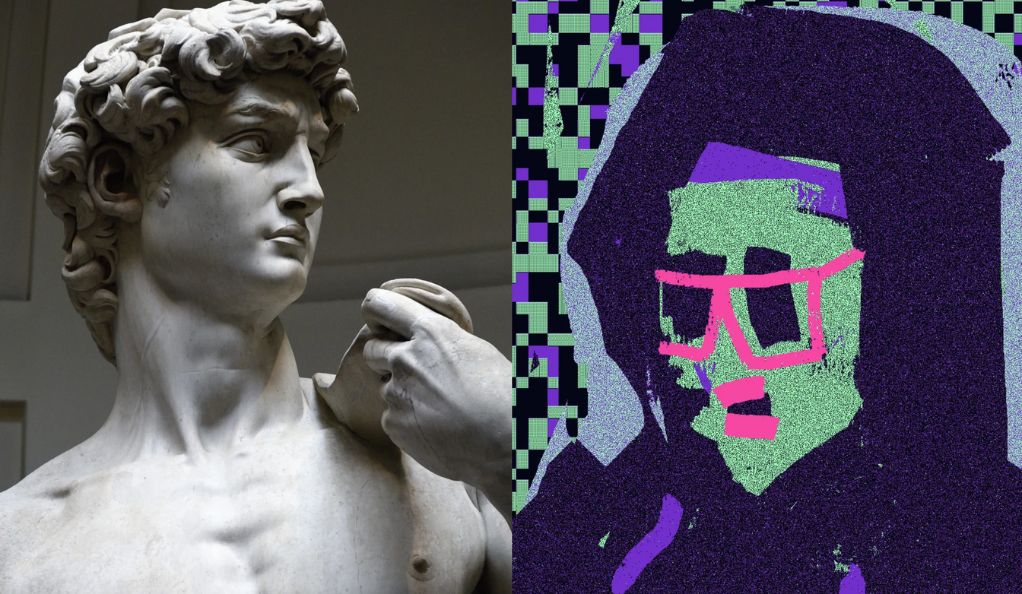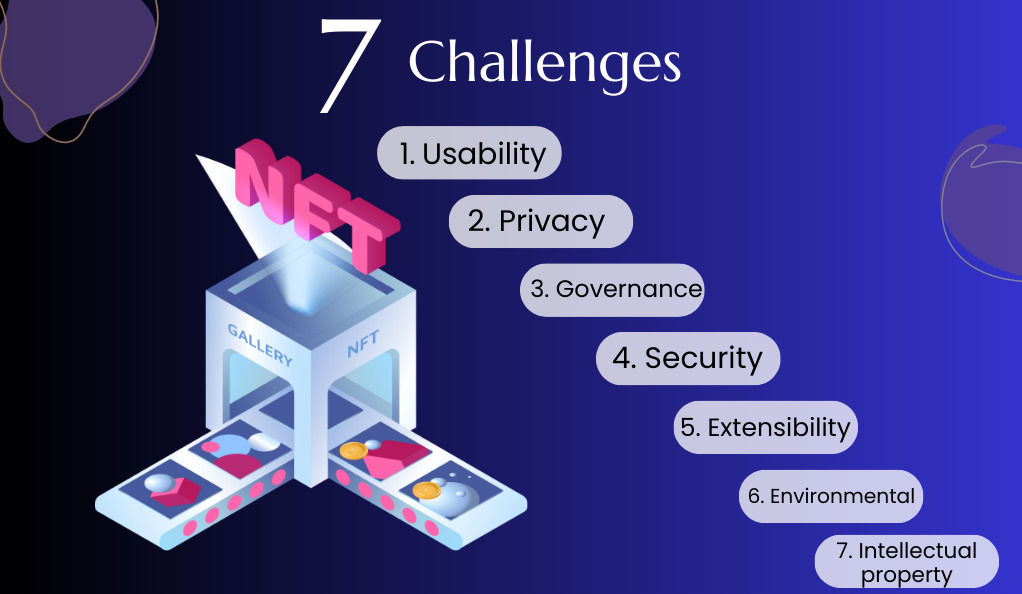A Brief Introduction to NFTs
NFTs, or Non-Fungible Tokens, are unique digital assets verified using blockchain technology. They have transformed various domains, with art being one of the most prominent. Unlike cryptocurrencies, each NFT is distinct and represents ownership of a specific item, often digital artwork or collectibles. This one-of-a-kind feature offers an exciting and lucrative opportunity for artists to bring their creativity to life in a digital format.
The concept of NFTs has given rise to a completely new way of appreciating, owning, and selling art. The digital certificate of ownership enables artists to maintain the uniqueness of their work while offering a new channel for revenue. The blockchain ensures authenticity and allows for a transparent tracking of the art’s lineage, all of which has ignited an enormous interest in the art world.
Traditional Art vs. Digital Art

What is traditional art?
Traditional art refers to physical, tangible creations crafted using mediums like paint, clay, charcoal, or film. These artworks carry the physical presence and touch of the artist, often seen in the texture or imperfections. Traditional art has historical roots and is often seen in museums and galleries, representing various cultures, times, and emotions.
Digital art, on the other hand, has paved a new path for creative expression. It offers artists limitless possibilities, transcending boundaries that physical mediums might impose. Moreover, digital art provides a platform for unique ownership through NFTs, merging physical art’s exclusivity with the digital realm’s accessibility.
Why digital art is gaining momentum
Digital art is gaining momentum due to its limitless potential and adaptability. Artists can experiment with forms, colors, and techniques without constraint. With the advent of NFTs, digital art has also found its place in economic viability, allowing artists to retain ownership rights and monetize their work in novel ways.
Additionally, digital art’s allure extends to its global reach. Traditional artists, once limited by geography, now find their audience worldwide. This global connection has fueled creativity and established digital art as a significant and lasting form of expression.
The Rise of NFTs in the Art World
A brief history of NFTs in art
The story of NFTs in the art world is relatively new but impactful. Although their inception dates back to around 2015, the turning point came with the artist Beeple, whose digital collage sold for a staggering $69 million. This event brought NFTs into the spotlight, showcasing their potential for both well-known and upcoming artists.
NFTs have since become a force in the art world, enabling artists to monetize digital works in ways previously unimaginable. They have created a market where digital art can be bought, sold, and traded like traditional pieces, all while retaining the digital benefits of infinite replication without loss of quality.
The benefits for artists
NFTs have been a boon for artists, offering various advantages. They provide a new revenue stream, especially for digital artists who had limited opportunities to monetize their work previously. NFTs also allow artists to directly reach their audience, bypassing traditional galleries and brokers, often taking significant commissions.
Furthermore, NFTs enable artists to retain rights over their work, something not easily achievable in traditional art sales. The blockchain technology that verifies an NFT ensures that the original creator can always be traced, supporting artists’ rights and potentially leading to future royalties from resales.
Profiles of Traditional Artists Embracing NFTs
- Artist 1: A Renaissance in Digital
Jane Doe, a renowned traditional painter, has recently embraced NFTs with her digital collection. She managed to infuse her classical painting techniques into her digital pieces, creating a Renaissance in the virtual world. Her transition from canvas to screen has resonated with both classical and modern art lovers, showcasing that tradition and innovation can coexist beautifully.Her journey wasn’t just about transferring skills but adapting her understanding of art to a new medium. By embracing digital tools and the NFT market, she has expanded her reach and tapped into a new, tech-savvy audience, all while staying true to her artistic roots.
- Artist 2: Merging Past and Future
John Smith, known for his incredible sculptures that have graced galleries worldwide, took an audacious step into the NFT space. He translated his physical sculptures into digital forms, not just recreating them but offering new interactive dimensions. His NFTs provide a virtual experience, allowing viewers to explore and engage with his art in ways not possible with physical pieces.John’s venture into NFTs showcases a brilliant merge of past and future, blending his traditional sculpting skills with cutting-edge technology. His digital sculptures have made his work accessible to a global audience, preserving the essence and tactile feel that defines his art.
- Artist 3: Sculpting in the Virtual World
Linda Brown, known for her intricate wooden carvings, took the art world by surprise by sculpting in virtual reality (VR) and later minting these as NFTs. She describes the thrill of having unlimited ‘materials’ and ‘tools’ in the digital world, enabling her to experiment beyond the constraints of physical mediums.Her NFT collection is not just a replica of her physical works but an evolution. By embracing VR and NFTs, she has sculpted a new path for herself and other traditional artists, demonstrating that the transition to the digital realm can be both natural and exhilarating.
Challenges Faced in the Transition
Technical challenges
The transition from physical to digital isn’t without hurdles. Many artists find themselves grappling with complex technologies like blockchain, digital sculpting tools, or understanding ‘gas fees.’ These technical challenges can be daunting and require time and effort to overcome.
Despite these challenges, support communities, online resources, and platforms are emerging to assist artists in this transition. They offer guidance, tutorials, and sometimes even hands-on support to ensure artists can focus on their creativity rather than technicalities.
Perceptual challenges
One of the most significant barriers to embracing NFTs is the perceptual challenge within and outside the artist community. Many traditional art enthusiasts question the legitimacy, value, or emotional depth of digital art, believing it to lack the ‘soul’ or authenticity of physical art.
Overcoming this skepticism requires education, dialogue, and open-mindedness. Artists transitioning into the digital space often find themselves not just learning new skills but also advocating for a broader understanding and acceptance of digital art and NFTs as valid and valuable forms of artistic expression.
The Future of NFTs and Traditional Art
Market Predictions
The future of NFTs appears promising, with continued growth and interest. Market experts predict that NFTs will not just be a fleeting trend but a lasting aspect of the art world. However, the notion that NFTs might replace traditional art seems far-fetched.
The allure and charm of physical art, its history, texture, and presence, remain unparalleled. NFTs are an evolution of artistic expression, opening new doors but not closing old ones. They offer an exciting convergence of art and technology that appeals to a new generation without alienating traditional art lovers.
Integrating the old with the new
The future likely lies in the integration of traditional and digital art. This synergy could lead to innovations like virtual art exhibitions mirroring their physical counterparts or offering augmented reality experiences linked to physical artworks.
One exciting prospect is collaborations between traditional and digital artists, producing artworks that bridge the gap between the physical and virtual realms. Imagine an NFT that comes with a physical counterpart, creating a holistic art experience that appeals to a broader audience and enhances the value of both pieces.
Conclusion
The emergence of NFTs as a transformative force in the art world is undeniable. As traditional artists navigate this evolving landscape, their journeys of adaptation, innovation, and resilience offer inspiration and insights. The fusion of the old and new worlds is a testament to the boundless nature of art, always evolving and forever enchanting.
FAQs
1. What are NFTs?
NFTs, or Non-Fungible Tokens, are distinct digital assets verified on the blockchain, ensuring authenticity and uniqueness. Unlike cryptocurrencies like Bitcoin or Ethereum, which are fungible and interchangeable, each NFT is unique and often represents ownership of a specific item, usually digital artwork, collectibles, or other forms of digital media.
2. How do traditional artists benefit from NFTs?
Traditional artists can reap several benefits from NFTs. Firstly, they can monetize their digital artworks, opening new revenue streams. Secondly, NFTs allow them to retain more rights over their creations, offering potential royalties from future sales and ensuring the originality of their work. Lastly, artists gain broader exposure in the global market, connecting directly with art enthusiasts and collectors.
3. Can NFTs and traditional art coexist?
Absolutely. While NFTs offer a new dimension to art, they don’t diminish the value or significance of traditional art. Both forms can coexist, complementing and enhancing each other, creating a richer and more diverse artistic landscape.
4. How do artists create art for NFTs?
Artists use various digital tools, software, and platforms to create digital art. This process often involves transferring their traditional skills into a digital format, adapting to the tool’s capabilities, and experimenting with new techniques. Once the digital art piece is ready, they can ‘mint’ it into an NFT using specific platforms, attaching a unique code that verifies its authenticity on the blockchain.
5. Will NFTs replace physical art?
No, NFTs will not replace physical art. Instead, they provide a different avenue for artistic expression and monetization. Physical art, with its tangible presence, history, and sensory appeal, has a unique charm that remains irreplaceable. NFTs offer another layer to the art world, making it more dynamic and inclusive.

